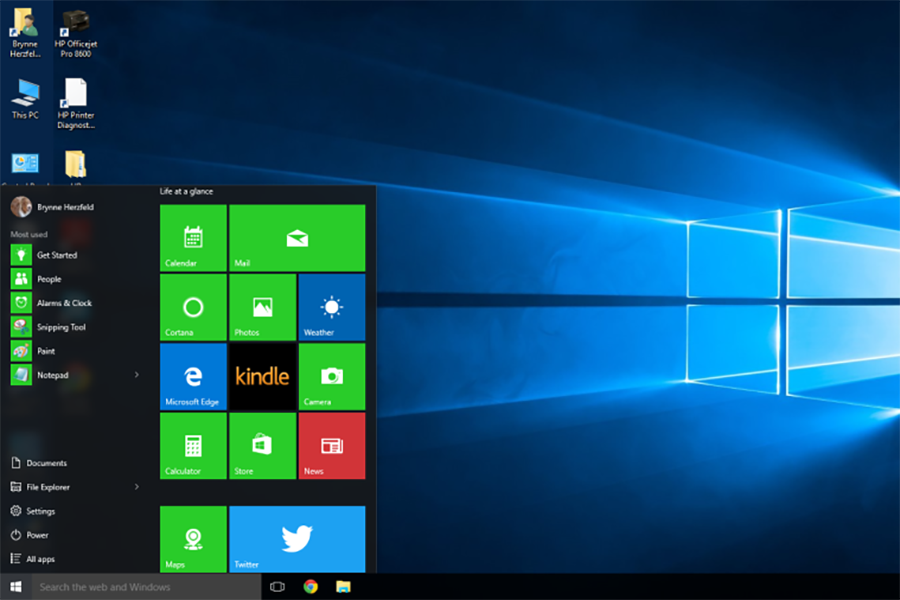Windows 10: The wait is over
The live tiles of Windows 8 found a new home in the corner Start menu.
October 5, 2015
As of July 29, Windows 7 and Windows 8 users can upgrade to Windows 10 for free.
Microsoft’s newest operating system boasts their new internet browser, Microsoft Edge, originally codenamed Spartan. Though it’s separate from Internet Explorer, Edge still retains the style and layout of IE, but enables users to write, highlight, make notes and take screen caps on the webpage. Despite these new features, Edge inherited its cousin’s infamous, slow and freezing webpages.
Windows 10 has two different editions: Windows 10 Home and Windows 10 Pro. The only differences between the two is that Windows 10 Pro is designed for professional workers, while still keeping all of Windows 10 Home’s capabilities. Windows 10 Pro is only available as an upgrade from Windows 7 Professional, Windows 7 Ultimate, Windows 8 Pro or Windows 8 Pro for Students.
While Windows 10 might have fixed problems with Windows 8’s complicated menus, it brings a new set of glitches to the table, especially sound glitches. Users report that, even with headphones plugged in, sound will play through the computer’s speakers. Some users are able to temporarily fix this bug by repeatedly plugging and unplugging headphones until the headphones play sound, but for others, even updating the audio drivers won’t work.
Another complaint addresses how the audio plays after being paused. On Windows 10, pausing sound and clicking play causes the volume to skyrocket, while still showing the original volume level. Changing the volume reverts it to the previous level, until you pause again.
Despite these glitches, Microsoft boasts an impressive 75 million devices with Windows 10, and that number is growing every day. However, users have until July 29, 2016 to upgrade for free. Though Microsoft has not released the official price, the current estimated retail price for Windows 10 Home is $119.99, and Windows 10 Pro costs $199.99. Office 2016 was released on Tuesday, September 22, but is only a free upgrade for current subscribers to Office 365.
But with Windows 10 comes the end of new operating systems for Microsoft. Microsoft confirmed that the days of large operating system overhauls are over. The plan is to make Windows a service rather than a product. In order to achieve this, Microsoft will release updates to Windows 10, but Windows 10 is the last major OS upgrade as Microsoft launches into a new technological era.


